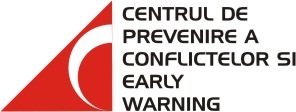Over the past few years, Romania has recovered delays faster that the region as a whole, and managed to significantly bridge the gaps separating it from the rest of the region; in contrast to Poland, a country with a similar economy, delays have been reduced from six to three years in terms of nominal convergence and from eight to five years in terms of real convergence.
Many analysts expect a slight correction in the months to come, with the Central Bank Governor himself referring, on several occasions, to a possible “soft landing.”
The main problem facing Romania is the increase in the current account deficit, only 40 per cent of which will be covered by foreign investments this year; in the future, the percentage is expected to decrease, although FDI will stay high, given that Romania is the largest country in the region.
Recent statistics on the agricultural year—a disastrous one, 70 per cent poorer than last year—require a correction of early-year estimates. IMF says the economic growth in Romania will slow down to 6.3 per cent this year from 7.7 per cent in 2006, according to the recent World Economic Outlook.
The initial economic growth target announced by authorities was 6.6 per cent, but Minister of Economy and Finances Varujan Vosganian has recently mentioned that the GDP rise will reach 6 – 6.1 per cent this year because of the drought.
Estimates
For 2008, IMF expects the Gross Domestic Product to touch on six per cent. According to the international financial institution, the December / December inflation rate in 2007 will reach 4.5 per cent and will likely go up to 4.8 per cent next year. The inflation target announced by the Central Bank for 2007 is four per cent plus/minus one per cent, whereas the 2007 National Bank inflation forecast was subject to a 0.2 per cent upward adjustment, from 3.7 per cent (May forecast) to 3.9 per cent.
Consumer prices rose by 1.08 per cent in September, as against 0.86 per cent in the previous month, as foodstuff, transport and telecom prices increased, and the inflation rate over the past 12 months exceeded six per cent for the first time since August 2006, which made most analysts expect an increase in the monetary policy interest rate in the October 31 meeting of the Central Bank board. Contributing to the fresh inflation surge was, among others, the depreciation of the national currency against the Euro over the past few months, which reflected on the rise in service prices. The average exchange rate forecast by the National Forecast Commission for the year is RON 3.3 for the Euro, and RON 3.18 in 2008.
The 2008 Budget bill recently passed by the Government is based on a 6.5 per cent economic growth rate, a 3.8 per cent inflation rate, a budget deficit accounting for 2.7 per cent of GDP, a current account deficit of 13.3 per cent of GDP and a currency exchange rate of RON 3.18 for the EUR. The salary increase is put at 12.3 per cent, according to the budget bill.
The current account deficit will draw close to 14 per cent of GDP this year (13.8 per cent), up against the 10.3 per cent of GDP reported for last year. For next year, IMF estimates indicate a decrease of the current account deficit to 13.2 per cent of GDP.
International context
“Countries with floating exchange rates, such as Romania, may raise interest rates in view of countering inflation pressures, while also considering tax tightening. Since the effects of the fiscal policy tend to be limited, certain measures aimed at reducing taxes and granting subsidies for housing loans are worth considering in the European emerging economies,” reads the IMF World Economic Outlook.
The development of the mortgage credit segment may contribute to countering inflation pressures by “pumping out” part of the household incomes from personal consumption spending. Meanwhile however, a sustained bank monitoring, particularly of forex loans, is critical to maintaining the loan quality.
“Many countries have consolidated prudential and administrative regulations aimed at encouraging banks to refine their risk management and/or to slow down the credit growth rate, but apparently effects have been limited so far,” reads the Report.
Other negative factors mentioned by IMF as likely to impact transition economies such as Romania are the global economic imbalances, i.e. the high trade deficit in the US and the high surplus in China and OPEC countries. The financial institution reiterated that the US dollar is overrated in spite of the significant decline recently, whereas the Japanese Yen is under-assessed.
“The real effective US dollar is still estimated to be above its medium-term fundamental value,” reads the WEO.
Meanwhile, the Euro performs in line with medium-term economic developments. While the high value of the single currency made some European politicians request the United States to step in and boost the dollar performance, IMF analysts believe the Euro is not excessively rated.
IMF expects a 2.5 per cent growth rate in the Euro area this year, i.e. 0.1 percentage points under the July forecast. For 2008, the estimate was adjusted by 0.4 per cent, to 2.1 per cent.
The adjustment reflects the impact of the strength of the Euro on export prospects, the negative effect of the slower growth rate in the US, as well as the tightening financial conditions—given that a number of European banks have significant exposure to the US housing market, particularly through off-balance-sheet vehicles supported by back-up lines of credit. Over the past few weeks, the Euro has reached new record-high levels against the US dollar, and some European politicians requested the US to step in and support the American currency.
If the economic growth rate is below estimates, the European Central Bank may consider easing the monetary policy, while at the same time moving to keep inflation in check.
Inflation affects the Euro area …
In September the Euro area inflation rate exceeded the target eyed by the European Central Bank for the first time in 12 months, on account of higher oil prices, according to data made public by the EU statistics office, Eurostat, quoted by Reuters.
Eurostat estimates that the CPI in the 13 countries which use the single currency picked up 0.4 per cent in September as against August and an annual 2.1 per cent, in line with analyst expectations based on previous forecasts.
The ECB wants to keep the annual inflation rate below 2 per cent, but close to this level. The bank managed to keep the CPI increase rate within this range ever since last September, by gradually tightening the reference interest rate.
Many economists believe the ECB will not further raise the reference interest rate, currently at 4 per cent, as a slowdown of the economic growth rate is expected, primarily as a result of the tightening global credit conditions.
But the ECB pointed out that inflation pressures remain high, and some bank officials believe the credit sector problems have only delayed a new raise of the monetary policy interest rate.
The headline CPI, which does not look at energy prices and non-processed foodstuff prices, was 2 per cent. It is the headline CPI which influences ECB decisions.
Energy prices picked up three per cent in September as compared to the corresponding month in 2006.
Germany, the largest economy in the Euro area, reported a 2.7 per cent inflation rate. CPI rates in Greece and Ireland rose in September by an annual 2.9 per cent.
…and would-be members alike
Inflation is also an issue for the countries which want to join the monetary union. To ensure convergence to the Euro, applicants are to meet a number of criteria, including a 60 per cent of GDP ceiling on the total foreign debt, a constant exchange rate against the Euro for two years prior to accession and an inflation rate max. 1.5 per cent above the average figure reported by the three EU Member States with the lowest inflation rates. Denmark, Malta and the Netherlands reported the lowest inflation levels in August, with the average standing at 0.9 per cent.
“We are very interested in joining the Euro area as soon as possible, but, of course, we have the inflation issue to deal with,” Prime Minister of Latvia Aigars Kalvitis stated, according to Mediafax.
Adoption of the Euro currency is the next step for the former communist bloc states, after acquiring the EU and NATO membership. The ten states joined NATO in 1999 or 2004. Hungary, Poland, the Czech Republic, Slovenia, Slovakia, Lithuania, Latvia and Estonia joined the EU in May 2004, and Bulgaria and Romania early this year.
So far, Slovenia is the only state to have adopted the single currency, in January 2007. Slovakia hopes to get the approval of European ministers for finances for next year, as it has both the inflation and the governmental spending in check.
Lithuania failed to meet the Euro area conditions last year, and subsequently inflation “went out of control,” according to Danske Bank senior economist Lars Christensen, quoted by Mediafax. The annualised inflation rate in this country surged to 7.1 per cent in September, as against 5.5 per cent in August.
Inflation goes up in Romania as well
Romania, too, faces a likely increase in inflation which jeopardises the target set by the national bank, primarily on account of the increase in foodstuff prices further to a very poor year for agriculture. National Bank of Romania (BNR) Governor Mugur Isărescu pointed out in a workshop Monday that the Central Bank is concerned with the future inflation pressures, rather than with the inflation rate overstepping this year’s variation margin. The inflation outlook has worsened, as the factors likely to impact consumer prices have grown more numerous and powerful, Isărescu explained.
BNR may raise the reference interest rate by up to one per cent in the October 31 Board meeting, in response to the recent inflation rise, Lucian Croitoru, adviser to BNR Governor Mugur Isărescu told Reuters in an interview yesterday.
He added that there are sound chances for the interest rate to be increased in October, and the raise may range between 0.25 and one percentage point.
The Central Bank has cut down the reference interest rate four times this year, from 8.75 per cent to 7 per cent, as the inflation rate stood low. In September, the year-on-year inflation surged to 6 per cent, exceeding the year-end margin targeted by BNR, i.e. 3-5 per cent, against the backdrop of the drought and foodstuff price rise.
BNR does not need to wait for the official release of inflation statistics for October, scheduled for mid-November, before making a decision on the monetary policy interest rate, Croitoru stated, as the institution makes decisions on the basis of its own data.
But Croitoru reiterated the position previously adopted by BNR, which is more concerned with the volatility of the monetary market than with the various currency exchange rates as such.
The national currency, which this July reached a five-year high against the Euro (RON 3.087) and in September fell to a 2007 low of 3.4303, may face future appreciation pressures if the Ministry for Finances sells one billion Euro worth of Eurobonds this year, i.e. double the value initially announced by Minister Varujan Vosganian.
ECB recommendations
Jürgen Stark, member of the Executive Board of the European Central Bank, in charge with the monetary policy implemented in Euro area states, recommends that new EU Member States should make sure that measures taken in view of the Euro adoption do not affect the economic growth.
“It is more important for central and eastern European states to carry on the line of impressive achievements, than to risk facing new problems if accession to the monetary union takes place too soon,” Stark stated in a recent speech.









